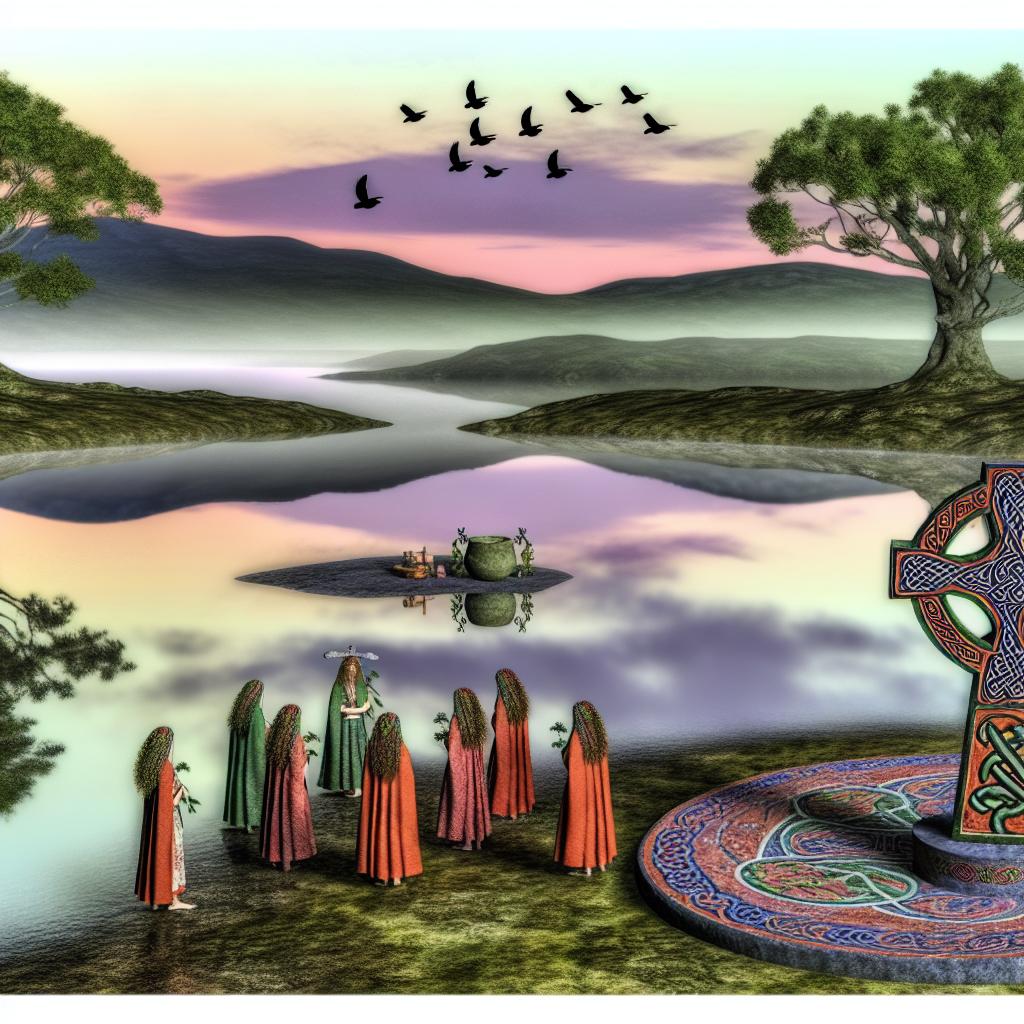The Significance of Lakes in Celtic History
Lakes have been pivotal in the historical and cultural development of Celtic societies, serving roles that extend far beyond mere geographical landmarks. Known as lochs in Scotland, these water bodies have been integral to both the daily existence and the spiritual practices of the Celtic peoples. Their significance in the mythological landscape has left a lasting imprint on the cultural identity of the regions influenced by these ancient communities.
Practical Importance of Lakes
The practical importance of lakes in Celtic history is multifaceted. For starters, settlements were often established around lakes to harness their resources efficiently. Lakes provided an essential supply of water, crucial not only for the survival of the people but also for sustaining livestock and crops in nearby fields. The proximity to water allowed for successful agriculture, which was the backbone of Celtic livelihoods.
Aside from providing water, lakes were a fundamental source of food. They teemed with a variety of fish and aquatic life, thus serving as a vital food reserve. Fishing techniques developed around these waters were an essential part of dietary practices.
Furthermore, lakes played a strategic role in the safety and defense of the Celtic people. Settlements near lakes could more easily monitor approach routes and fend off potential threats, taking advantage of the natural barrier that water provides. Traders also benefited from the positioning of these settlements, as lakes facilitated the movement of goods and ideas between communities, effectively serving as highways long before the advent of modern roads. These exchanges were not merely transactional but also cultural, allowing for the sharing of traditions and stories that enriched Celtic life.
Lakes, being central to communities, inevitably became venues for social interaction. They hosted various gatherings and community activities, strengthening the social fabric. Markets often took place by the shores, encouraging commerce and socialization. The cultural life around lakes was vibrant and dynamic, driven by both necessity and the joy of coming together.
Lakes in Celtic Mythology and Spiritual Practices
One of the most enduring elements of Celtic culture is its rich mythology, in which lakes often play a central role. The Celts revered lakes as mystical sites, believed to be portals to the Otherworld or places where deities resided, imbued with supernatural properties.
The Lady of the Lake is a prominent figure in Arthurian legends, underscoring the lake’s mystical associations. This myth, among others, reflects the Celts’ perception of lakes as realms where the natural and supernatural harmoniously coexist. The notion that lakes were inhabited by spirits provided a framework for many legends and stories passed down through generations.
Archaeological discoveries support the idea that lakes were also centers of spiritual practice. A variety of artifacts have been uncovered from bodies of water, including weapons, personal ornaments, and occasionally human remains. These findings align with the theory that lakes were sites for ritual offerings. Such offerings were likely made to seek favor from deities, appease spirits, or ensure overall harmony and prosperity for the community.
The Presence of Spirits and Water Deities
The Celtic pantheon, diverse and richly populated, includes numerous deities and spirits associated with lakes. These deities were venerated through rituals that often involved offerings made directly to their watery abodes. The belief that spirits inhabited lakes emphasized the need for humans to maintain a respectful and harmonious relationship with these entities.
Ceridwen, associated with wisdom and inspiration, is one renowned figure tied to such waters. Her influence is reflected in myths and stories that highlight the importance of lakes as sources of knowledge and creativity.
In Wales, Llyn y Fan Fach is the origin of many local legends and serves as another example of the lasting legacy of Celtic water deities. Stories surrounding such lakes contribute to the cultural richness of the regions they are in, with the tales being an essential component of local folklore.
Modern Connections
In contemporary times, the cultural significance of lakes continues to resonate in regions historically inhabited by Celtic peoples. Famous sites such as Loch Ness have drawn global attention, largely due to lore surrounding mysterious creatures believed to dwell in their depths.
Other lakes like Lough Neagh, the largest in Ireland, serve as focal points for cultural festivals and storytelling, perpetuating the enduring influence of Celtic traditions. These bodies of water remain vibrant symbols of cultural heritage, underlining the lasting legacy of Celtic myth and folklore.
Modern practices, too, reflect this deep-seated connection. Festivals, literature, and tourism all tap into the historical narratives surrounding lakes, ensuring the continuation of ancient traditions in a way that is relevant to contemporary society.
Further Reading
The layers of Celtic spirituality and the ties to lakes are expansive topics offering rich exploratory possibilities. For those seeking to delve deeper into the subject, numerous resources can offer more comprehensive insights. Articles such as those available on the Ancient History Encyclopedia provide valuable information. Similarly, the Encyclopaedia Britannica contains a wealth of knowledge on Celtic history and culture.
Lakes in Celtic tradition are a seamless blend of utility and mysticism. These water bodies have been interwoven with the practical aspects of life and the spiritual ethos of the Celts, providing a profound insight into the ancient world. Their legacy continues to offer a glimpse into the beliefs, values, and daily lives of the Celtic people, enriching our understanding of how deeply interlaced geographical and cultural elements can be.
